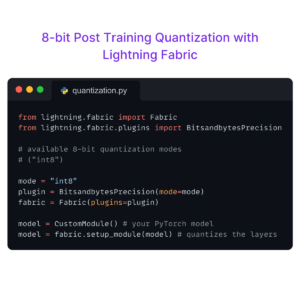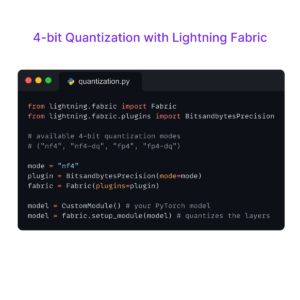OpenAI is creating an entirely new class of generative models for images, and researchers are wondering how language models do in-context learning. ChatGPT is now available in Azure OpenAI Service and is being added to Discord’s Clyde bot. Let’s dive in!
Research Highlights:
- Researchers from OpenAI proposed consistency models to overcome the the limitation diffusion models have with their dependence on an iterative generation process that causes slow sampling speed and caps their potential for real-time applications. These “consistency models” are a new family of generative models that claim to achieve high sample quality without adversarial training. These models are said to surpass current distillation methods for diffusion models in one and few-step generation, according to the researchers’ rigorous testing.
- Google and Stanford researchers investigated the impact of semantic priors against input-label mappings on in-context learning (ICL) in language models. They looked into two setups spanning several model families: ICL with flipped labels and ICL with semantically unrelated labels. According to the team, when given enough flipped labels at scale, LLMs can overcome semantic priors; these models can also function effectively when substituting targets with targets that are semantically dissimilar.
- Microsoft researchers introduced Visual ChatGPT, a system that incorporates different Visual Foundation Models, to enable users to send and receive images from ChatGPT and more. The authors took into account models with multiple inputs and outputs and models that call for visual feedback while creating a series of prompts to introduce the visual model information into ChatGPT. According to their research, Visual ChatGPT provides a platform for exploring the visual responsibilities of ChatGPT with the use of Visual Foundation Models. Their system is publicly available at github.com/microsoft/visual-chatgpt.
ML Engineering Highlights
- Discord revealed that it is introducing a number of new AI experiences to various servers. OpenAI ChatGPT technology is being added to Discord’s Clyde bot so that users can have more in-depth chats with the bot. To communicate with Clyde in any channel, enter @Clyde in a server. You may also request that Clyde start a post so that you and your friends can hang out. Clyde may make music recommendations and utilize GIFs and emojis just like any other Discord member, according to Discord.
- The Hailo-15H, M, and L SoCs are the newest processor family from Tel Aviv-based Hailo, a producer of AI chips. The business created these new processors, like its forerunner, the Hailo-8, to power intelligent cameras and deliver AI models to the edge.
- Grammarly announced that it is introducing GrammarlyGo, a generative AI technology that enables users to generate ideas, write, edit, and customize text. Users can give brief directions to the new tool, which is based on OpenAI’s GPT-3 big language models, to generate whole writing drafts and convert bullet points into paragraphs.
Open Source Highlights
Microsoft presented a number of new developer-focused capabilities at its 2023 Azure Open Source Day. Included was ChatGPT’s availability in Azure OpenAI Service, two new open-source tools to promote the adoption of ethical AI methods as well as the public preview of new Vision Services .
Tutorial of the Week
DeepSpeed is an open-source optimization library for PyTorch that accelerates the training and inference of deep learning models. It was designed by Microsoft to address the challenges faced by companies and developers seeking to leverage large models, such as memory constraints and slow training times, and to improve the overall performance and efficiency of deep learning workflows. We’ve put together some best practices to make sure you’re using DeepSpeed to its fullest potential.
Community Spotlight
Want your work featured? Contact us on Discord or email us at [email protected]
- This PR fixes an issue involving DeepSpeed and the bfloat16 format. Shoutout to GitHub user colehawkins for identifying the source of the issue (a missing check) and for getting this fix ready to go. Awesome work!
- Want to stay at the cutting edge of our open-source libraries? Taking a look at our open issues and PRs is a great way to get in at the ground level on most of our ongoing and in-development projects. This PR, for instance, fixes an issue on one of our latest and most exciting libraries. 👀
- GitHub user KLOSYX has put together a repo showcasing PyTorch Lightning models that can be used to detect fake news. Take a look at it here.
Lightning AI Highlights
- Over the last year, the community has been more active than ever, giving us feedback and helping shape the direction of PyTorch Lightning. On March 15th, we will reveal the biggest update yet to our open-source libraries. Click here to be the first in-the-know!
- Want to get started with contributing to Lightning, but not sure where to start with your first contribution? Have a look at our good first issue label on GitHub, which are GitHub Issues curated by our team that are suitable for making a lightweight but important contribution to our open-source libraries. Looking for inspiration? Have a read through some past PRs as well!
- We’re on Discord! As the Lightning community has expanded throughout the years, we’ve been looking for the best place to gather and shape the future of AI together. Join us on Discord! We’ll be hosting community events, code-together sessions, and spending time with all of you.
Don’t Miss the Submission Deadline
- KR 2023: 20th International Conference on Principles of Knowledge Representation and Reasoning. Sep 2 – 8, 2023. (Rhodes, Greece). Submission deadline:Wed Mar 15 2023 04:59:59 GMT-0700
- AutoML-Conf 2023: The international conference on automated machine learning. Sep 12-15, 2023. (Berlin, Germany). Submission deadline: Fri Mar 24 2023 04:59:59 GMT-0700
- BMVC 2023: 34th annual conference on machine vision, image processing, and pattern recognition. Nov 20 – 24, 2023. (Aberdeen, United Kingdom). Submission deadline: Fri May 12 2023 16:59:59 GMT-0700
- NeurIPS 2023: 37th conference on Neural Information Processing Systems. Dec 10 – 16, 2023. (New Orleans, Louisiana). Submission deadline: Wed May 17 2023 13:00:00 GMT-0700

